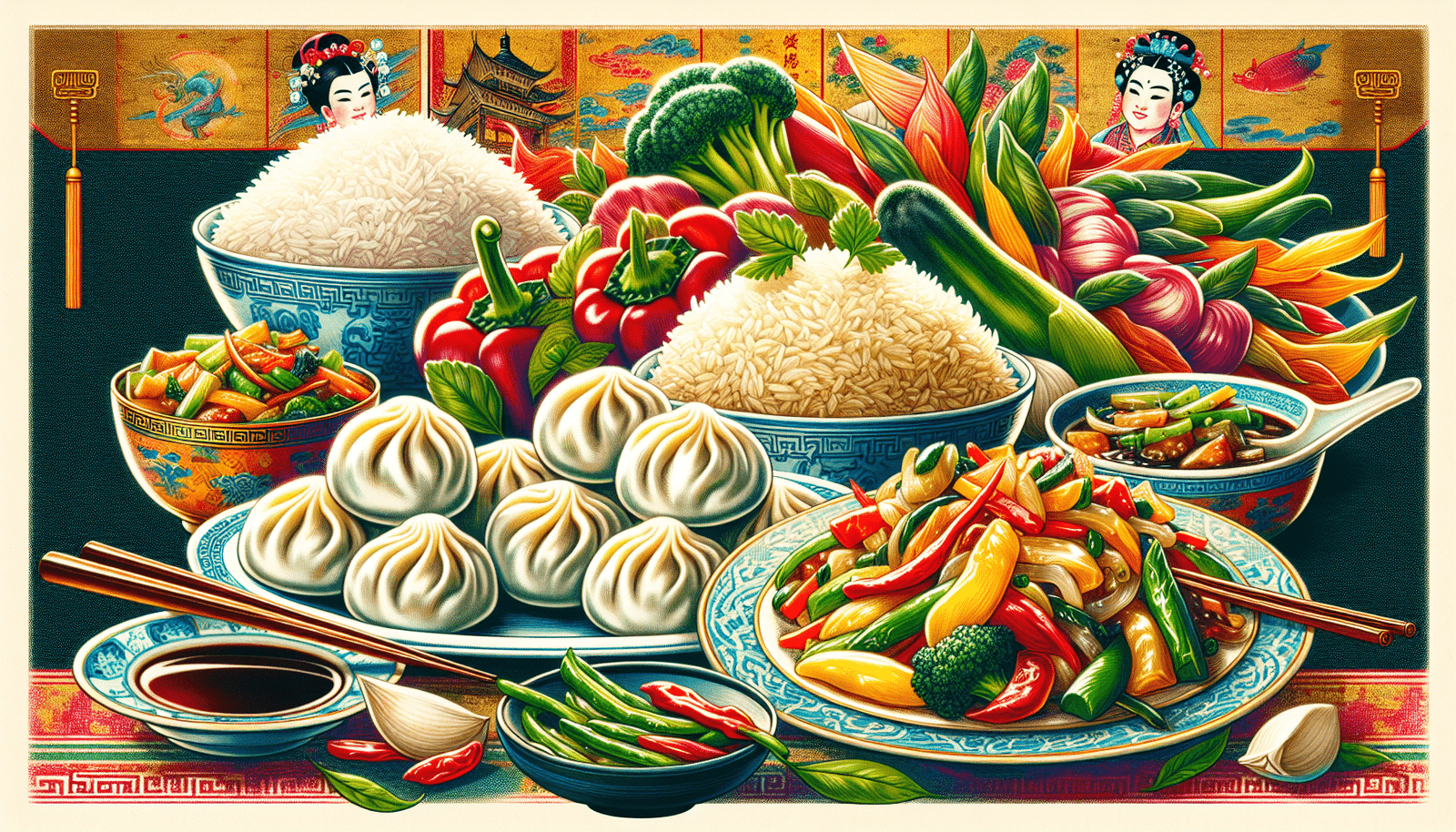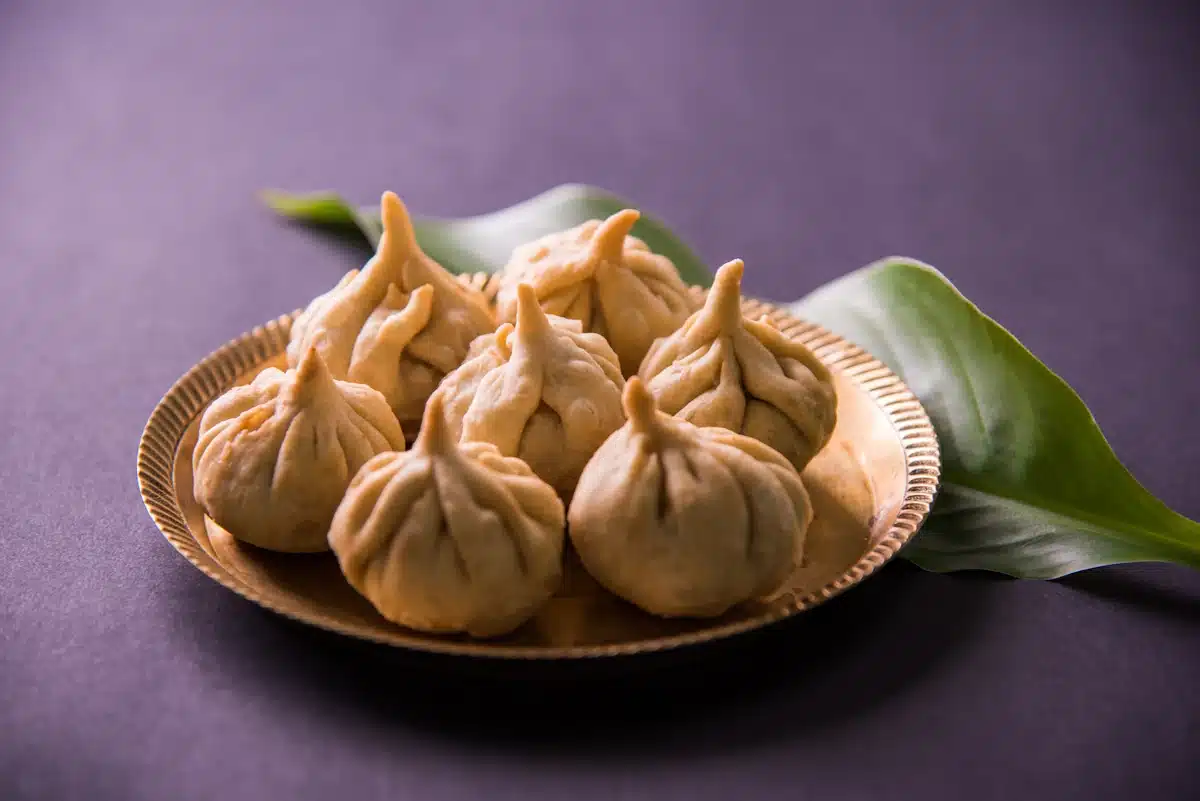Managing diabetes doesn’t mean giving up Chinese food; diabetes can be managed while enjoying your favourite dishes. In this article, you’ll discover how to enjoy your favourite dishes by choosing the right carbs, proteins, and vegetables. We’ll also give you tips on healthier cooking methods and portion control.
Key Takeaways
Carbohydrate management in Chinese cuisine is essential for diabetes control; opt for whole grains and practice portion control to maintain stable blood sugar levels.
Choose lean protein sources and nonstarchy vegetables to enhance nutritional value while reducing calories and impacting blood sugar.
When dining out, select steamed dishes and avoid high-sodium options; mindful choices can support effective diabetes management without sacrificing flavour.
Chinese Cuisine and Diabetes Table of Contents
Understanding Carbohydrates in Chinese Cuisine

Carbohydrates are significant in Chinese cuisine, often in staples like rice and noodles. While these foods are delicious, their high carbohydrate content can elevate blood sugar levels, making portion control crucial. Opting for brown rice instead of white rice can be a game-changer. Brown rice retains important nutrients and has a high fibre content, which can help manage blood sugar levels more effectively. Similarly, whole-grain noodles are a healthier alternative to traditional noodles, providing the benefits of whole grains emphasized in Chinese culinary wisdom.
When enjoying your favourite dishes, consider focusing on flavour and keeping portions small. For instance, a steamed meat bun should be limited to 60 grams to avoid excessive carb intake.
Incorporating whole grains into your meal, such as multigrain rice for congee, can also offer health benefits without spiking your blood sugar. These minor adjustments allow you to savour the rich flavours of Chinese cuisine while effectively managing your diabetes.

Check out our recipe for Vegetarian Buddha’s Delight
Smart Protein Choices
Protein is a cornerstone of a balanced meal, and making intelligent protein choices can significantly impact your health.
Lean proteins, such as:
chicken
lean ground pork
fish
extra firm tofu
…are excellent options in Chinese dishes. These proteins support heart health and help lower cholesterol levels.
Due to its lower moisture content, extra-firm tofu is particularly beneficial when preparing stir-fried dishes. It is ideal for cooking without excessive added fats.
Using fresh ingredients and keeping added fats minimal ensures a healthy meal. Fatty fish like salmon offer healthy fats that are beneficial for heart health. Including these lean proteins in your meal plan ensures you get the necessary nutrients without the extra calories and unhealthy fats, making your food choices delicious and health-conscious.
Nonstarchy Vegetables to Include
Nonstarchy vegetables are a diabetic’s best friend. These vegetables have minimal impact on blood sugar levels, making them a valuable addition to any meal. Common nonstarchy vegetables in Chinese cuisine include broccoli, cucumbers, and bitter melon, which can be incorporated into various dishes to enhance nutrient intake while keeping blood sugar stable. Leafy greens like watercress and bok choy are also excellent choices, offering essential vitamins and minerals.
A good strategy is to fill half your plate with nonstarchy vegetables. These vegetables are low in calories but high in water and fibre, helping you feel full. Vegetables like shiitake mushrooms, eggplants, and snow peas are nutritious and add diverse flavours and textures to your meals.
Focusing on these vegetables allows for a satisfying meal without concerns about blood sugar levels.
Healthier Cooking Techniques in Chinese Cuisine and Diabetes

The way food is prepared can significantly affect its nutritional value. Healthier cooking techniques, such as steaming and stir-frying, typically require less oil, making them ideal for maintaining a balanced diet. Steamed fish, for example, retains its nutrients without the added fats that come with frying. Additionally, boiling is a common method in Chinese cuisine that helps reduce meal fat content.
Avoid deep-fried and heavily sauced dishes to keep your blood sugar levels stable. Instead, use homemade low-sodium broths, like Shiitake Ginger broth, to add rich flavours while keeping sodium levels low.
Steaming or stir-frying, lean proteins, and abundant vegetables create a healthy meal supporting diabetes management.
Diabetes-Friendly Chinese Dishes

Many diabetes-friendly Chinese dishes can be enjoyed, including steamed dumplings, fresh salads, tofu stir-fry, and baked fish fillet. Steamed dim sum is healthier than fried versions. For a refreshing protein-rich dish, try citrus-infused shrimp and snow peas.
Seek dishes incorporating plenty of vegetables and lean proteins, such as garlic ginger broccoli, which supports health with its anti-inflammatory properties. Adding nuts or seeds to Chinese salads can provide extra crunch and nutrition.
Portion Control Tips at Chinese Restaurants

Portion control is crucial when dining at Chinese restaurants to help manage blood sugar levels. Sharing dishes allows you to enjoy a variety of foods while controlling portions. Ordering sauces on the side offers better control over sugar and sodium intake.
Maintaining small portion sizes of starches helps manage blood sugar levels effectively. Being mindful of portions allows you to enjoy your meal without compromising your health.
These portion control tips help you savour the flavours of Chinese cuisine while keeping your diabetes management on track.
Eating Mindfully and Socially
Mindful eating enhances awareness of hunger cues and helps improve dietary choices. It can also reduce symptoms of anxiety and depression among individuals with diabetes, regulate eating behaviours, and manage weight effectively.
In traditional Chinese culture, eating together brings harmony to the family and enhances health. During busy workdays, practice mindful eating by savouring each bite and appreciating the flavours of eating Chinese food.
Incorporate these practices into your routine, whether enjoying dim sum with friends or a quick lunch at home. This approach will satisfy your meals and support your overall well-being as you eat Chinese food.
Flavour Enhancers Without the Guilt
Healthy eating doesn’t have to be bland; flavour enhancers can make your meals delicious without unhealthy ingredients. Here are some options to consider:
Garlic, which is a staple in many cuisines and can boost flavour without relying on high-sodium sauces
Ginger is known for its unique taste and health benefits
Onions, which add depth and sweetness to dishes
- Mushrooms provide a savoury umami flavor and can serve as a great alternative to salty sauces
By incorporating these ingredients, you can enhance the flavour of your meals while maintaining a healthy diet.
Herbs and spices are your best friends regarding healthy food choices. Using them instead of salt can significantly enhance flavour without increasing sodium intake. Bitter melon can introduce a unique taste while keeping your meal diabetes-friendly.
Embracing natural flavour enhancers allows you to enjoy your favourite dishes guilt-free.
Better Appetizer Options
Starting your meal with a healthy appetizer can set the tone for a nutritious dining experience. Broth-based soups like wonton soup and egg drop soup are excellent starters. They help maintain stable blood sugar levels and often contain fewer than 100 calories. These delicious soups help fill you up, reducing the likelihood of overeating later.
Steamed dumplings are another better option compared to fried appetizers. These dumplings, filled with lean meats or vegetables, provide a satisfying start to your meal without the extra calories and unhealthy fats. Choosing healthier appetizers lets you enjoy your favourite dishes while adhering to healthy eating goals.
Lowering Sodium in Your Meal
Sodium intake is a critical factor to consider, especially when dining on Chinese foods. Most Americans consume nearly three times the necessary amount of sodium, making it essential to monitor your intake. The recommended daily limit for sodium is 2300 mg, but many Chinese dishes can exceed this limit in a single serving. For example, one order of barbecue spare ribs can contain 1.5 times the daily sodium limit.
To reduce sodium intake, choose low-sodium options or request less sauce on your dishes. Avoid dried, salted, pickled, and fermented foods, which can significantly increase sodium levels. Mindful choices enable you to enjoy Chinese cuisine without compromising health.
Dessert Tips for Diabetics
Desserts are often the highlight of a meal, but for people with diabetes, choosing the proper dessert is crucial. Egg tarts and tofu pudding can be occasional treats, but it’s best to opt for healthier options like sliced oranges. These fruit-based desserts provide natural sweetness without spiking blood sugar levels.
If you prefer homemade desserts, consider controlling the sugar and substituting sugar. Always check the Nutrition Facts label for carbohydrate content when choosing prepackaged desserts. Informed choices allow you to enjoy sweet treats while maintaining healthy blood sugar levels.
Portion Control Strategies
Managing portion sizes is crucial for maintaining stable blood sugar levels. According to Canada’s Food Guide, a balanced plate should consist of half vegetables and fruits, one-quarter protein, and one-quarter whole grains. Filling half your plate with nonstarchy vegetables can help you feel full while keeping calorie intake low.
Traditional Chinese meals often emphasize sharing multiple dishes, which can help control portion sizes. Sharing desserts is another effective strategy, allowing you to enjoy sweet treats without overindulging. Additionally, eating Chinese food can enhance the communal dining experience.
Adopting portion control strategies helps you enjoy your favourite foods while effectively managing diabetes.
Recommended Dishes at Chinese Restaurants

Making healthier food choices when dining at Chinese restaurants can help manage blood sugar levels. Recommended dishes include steamed chicken with broccoli and Kung Pao chicken with light sauce, which are lean protein options. Vegetarian options like Buddha’s Delight and steamed vegetables are also excellent.
Hold the rice and noodles to avoid refined carbohydrates and choose healthier side dishes like steamed vegetables. Mindful choices help you enjoy a balanced meal that supports your health goals.
What Dishes to Avoid at Chinese Restaurants

Certain Chinese dishes are best avoided due to their high calorie, sugar, and sodium content. Here are some poor choices:
Egg rolls, which are deep-fried and contain minimal nutritional value
Crab Rangoon, which is also deep-fried and lacks nutritional benefits
General Tao’s Chicken, which is heavily breaded, fried, and covered in sugary sauces
Sweet and Sour Pork, which is similarly unhealthy due to its breading and sugary sauce
These dishes can result in unhealthy meals.
Barbecue Spare Ribs and Orange Beef are incredibly high in sodium and calories, making them dishes to avoid. Lo Mein, made from white flour noodles, can spike blood sugar levels rapidly. Avoiding these dishes helps maintain better control over blood sugar levels.
Eating Out Tips for Diabetes Management
Eating out doesn’t have to derail your diabetes management. Choose steamed options like rice or vegetables over fried alternatives to reduce calorie intake. Request dressings and sauces on the side to control portion sizes and ingredients. For instance, order shrimp and broccoli with the sauce on the side to manage your intake.
Starting your meal with light starters such as salads or grilled meats can minimize fat intake. Planning a post-meal walk can also help stabilize your blood sugar levels.
Following these tips allows you to enjoy dining out while controlling diabetes.
Chinese Cuisine and Diabetes Summary
In summary, making healthy choices when enjoying Chinese cuisine is entirely possible with a bit of mindfulness and preparation. From understanding carbohydrates and choosing smart proteins to incorporating nonstarchy vegetables and using healthier cooking techniques, each step contributes to better diabetes management. Flavour enhancers, portion control strategies, and lower-sodium options further support your health goals.
Remember, enjoying your favourite dishes doesn’t mean you have to compromise on health. By applying the tips and recommendations provided, you can savour the deliciousness of Chinese cuisine while keeping your blood sugar levels stable. Happy dining!
Frequently Asked Questions
Why is fried rice considered less healthy?
Fried rice is considered less healthy primarily because it uses white rice, which lacks fibre, and the frying process incorporates oil and salty soy sauce. This combination can lead to higher calorie and sodium content, making it a less nutritious option.
What is a recommended dish for vegetarians at a Chinese restaurant?
Vegetarian Buddha’s Delight is highly recommended for vegetarians at a Chinese restaurant. As an appetizer, egg drop soup complements it well.
What should you start your meal with for a healthier Chinese food order?
For a healthier Chinese food order, starting with a broth-based soup is advisable. This choice is lower in calories and can promote satiety.
How can you reduce calories and carbs in your order?
To reduce calories and carbs in your order, opt for steamed dishes rather than stir-fried options. This choice helps maintain a healthier meal profile while keeping flavour intact.
What is a traditional dessert suggested for a healthier option?
A healthier alternative to traditional desserts is sliced oranges, which provide a refreshing and nutritious option.











